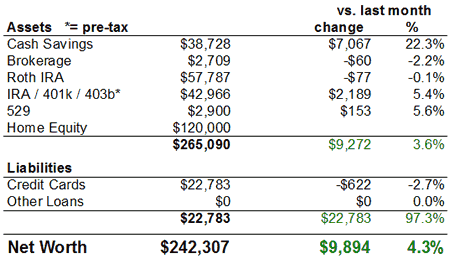While I tend to be straight-laced when it comes to taxes, I also think it is our right – heck, even our duty – to pay as little taxes as legally required. I take every deduction that I can substantiate. While learning about property taxes, I read that somewhere between 30-60% of homes in many areas are over-assessed. If the estimated assessment value is too high, then those homeowners are paying too much in taxes! In areas of dropping home values, you may be able to get your assessment lowered.
But don’t expect anybody to tell you this. From this 2000 and 2004 articles about property taxes, both from CNN Money:
“It’s an unfair system,” Lewis said. “You can go to one particular block in Long Island, for example, where 11 houses got a tax reduction last year because they filed grievances. The remaining 4 homeowners who didn’t file a grievance are still overpaying. In most municipalities, if you don’t file it means you accept the assessment value of your home.”
“The bottom line is that if homeowners aren’t focused on what has happened in their marketplace, they are paying too much in property tax,” says John Brusniak, a Dallas property tax lawyer.
My sister-in-law recently contested her assessment and successfully got a reduction in her property taxes. The way to do it seems to be for (1) each homeowner to do a little research as to how their local government does their property taxes, (2) figure out if they are over-assessed, and then (3) file an appropriate appeal if necessary.
How Are Assessments Calculated?
This varies between states and even counties, but it could be based on:
- the sales of comparable homes in your neighborhood,
- the replacement value of your home, or how much it would cost to build your home from scratch at current material and labor costs,
- a multiplier of how much rental income your property would produce,
- or the most recent purchase price, plus an inflation adjustment.
You can usually find an assessment report at the tax collector’s office showing you how they got their number. Now you have to reverse engineer things to figure out how you can argue it back down. For example, you might have comparables with lower prices, or they might have marked down your square footage or other details wrong. Use sites like Zillow or Domania as well, since they can be based on tax records. Ideally, you’ll find a house just like yours, but with a lower assessment value.
The Appeals Process
Check out your local state website. If you live in California, there is this Guide to Residential Property Assessment Appeals. In New York, they have a Guide to Fair Assessments For Property Owners.
After looking at a few examples, some places seem to have a written form you can fill out first (an informal review). From this SF Chronicle article:
If your home is worth less than you paid, chances are you also can get a temporary reduction in your property taxes – without a battery of lawyers or dubious arguments about functional obsolescence. Just ask your county assessor for an informal review of your assessed value. It’s free and easy to do yourself. […] In most counties, you can simply call or write your assessor’s office or download a form from its Web site and mail it in.
If that fails, then you might have to perform a formal appeal which involves meeting with officials and assessors face-to-face. It doesn’t seem all that complicated, besides building up your evidence the most important thing to have is persistence. Hurray for bureaucracy!
p.s. If you’re selling your home, consider that a lower assessment (and thus a lower tax bill for the new owner) can help you sell your home faster or even for a higher price.
 PineCone Research remains one of the better paying and reliable survey companies, with a payout of $3 for each 15-20 minute survey. The hardest part is signing up – I just ran across a banner ad for a
PineCone Research remains one of the better paying and reliable survey companies, with a payout of $3 for each 15-20 minute survey. The hardest part is signing up – I just ran across a banner ad for a  We are considering renting a room to one of our siblings temporarily. She’s moving out here for a new job, and since we live in an pricey area living with us will offer her a way to save up some money. On our side, we are two people with four bedrooms, so we have plenty of room right now.
We are considering renting a room to one of our siblings temporarily. She’s moving out here for a new job, and since we live in an pricey area living with us will offer her a way to save up some money. On our side, we are two people with four bedrooms, so we have plenty of room right now.  I’ve been noticing that multiple banks like Washington Mutual, Bank of America, and other banks have been offering me “free” Accidental Death & Dismemberment (AD&D) Insurance. Usually I get around $1,000 to $3,000 of complimentary coverage, just for being a valued customer. Awww, how thoughtful! At first glance, it sounds pretty good. That could cover a few funeral expenses in case I decide to go sky-diving again.
I’ve been noticing that multiple banks like Washington Mutual, Bank of America, and other banks have been offering me “free” Accidental Death & Dismemberment (AD&D) Insurance. Usually I get around $1,000 to $3,000 of complimentary coverage, just for being a valued customer. Awww, how thoughtful! At first glance, it sounds pretty good. That could cover a few funeral expenses in case I decide to go sky-diving again. You may be expecting a review of the new online service
You may be expecting a review of the new online service  After months of being stuck in the day-to-day issues of buying a house, moving, and work, I spent a lot of time today… daydreaming! Mainly because I am getting tired of only having 2-3 weeks of vacation per year, I went back to thinking about how early I can achieve financial freedom. Let’s say I really want to retire in 10 years by age 40. What do I need to do?
After months of being stuck in the day-to-day issues of buying a house, moving, and work, I spent a lot of time today… daydreaming! Mainly because I am getting tired of only having 2-3 weeks of vacation per year, I went back to thinking about how early I can achieve financial freedom. Let’s say I really want to retire in 10 years by age 40. What do I need to do? 
 The Best Credit Card Bonus Offers – March 2024
The Best Credit Card Bonus Offers – March 2024 Big List of Free Stocks from Brokerage Apps
Big List of Free Stocks from Brokerage Apps Best Interest Rates on Cash - March 2024
Best Interest Rates on Cash - March 2024 Free Credit Scores x 3 + Free Credit Monitoring
Free Credit Scores x 3 + Free Credit Monitoring Best No Fee 0% APR Balance Transfer Offers
Best No Fee 0% APR Balance Transfer Offers Little-Known Cellular Data Plans That Can Save Big Money
Little-Known Cellular Data Plans That Can Save Big Money How To Haggle Your Cable or Direct TV Bill
How To Haggle Your Cable or Direct TV Bill Big List of Free Consumer Data Reports (Credit, Rent, Work)
Big List of Free Consumer Data Reports (Credit, Rent, Work)